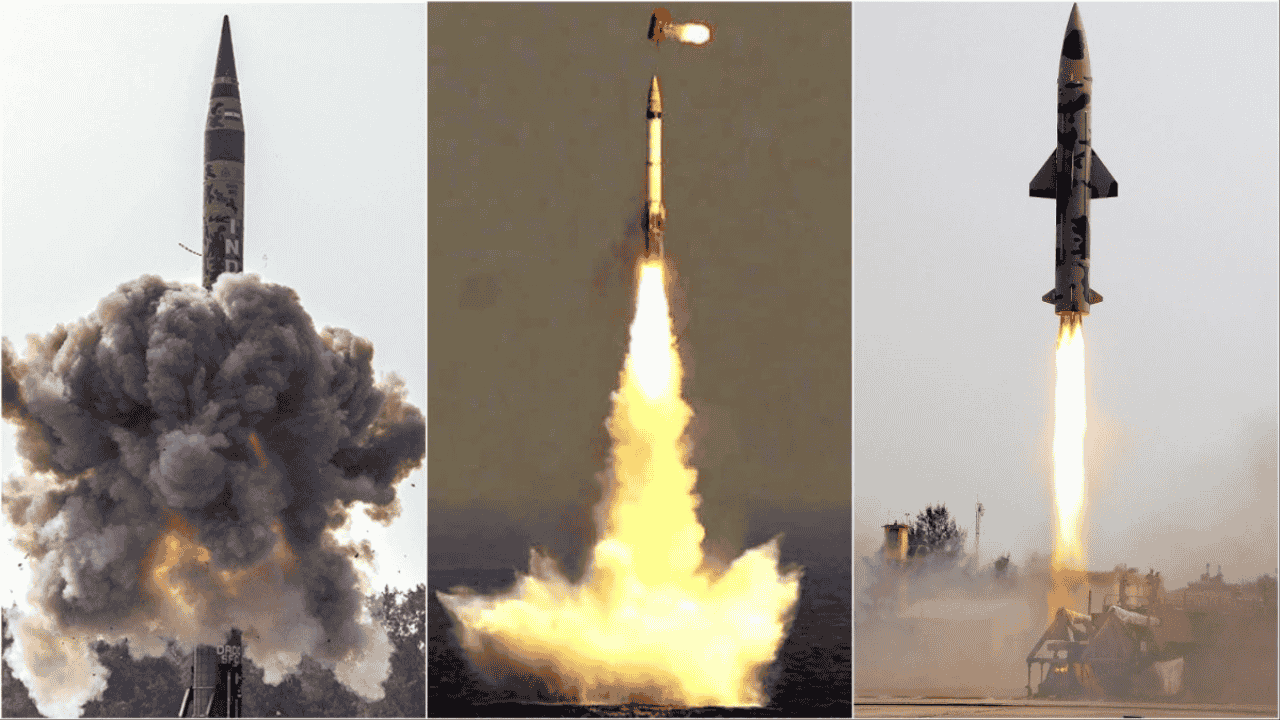India has taken its strategic capabilities to new heights by initiating the development of a conventional (non-nuclear) bunker buster variant of the intercontinental ballistic missile Agni-5. This initiative places India among the select group of countries possessing advanced missile technology capable of deep penetration strikes.
Key Features of the Missile
Some of the main features of this Agni-5 missile developed by the Defence Research and Development Organisation (DRDO) are as follows:
Technical Facts:
Warhead Capacity: Bunker buster warhead of up to 7,500 kilograms
Penetration Capability: Can strike targets located 80–100 meters underground
Range: 2,500 kilometers (less than the original Agni-5)
Speed: Mach 8 to Mach 20 (8 to 20 times the speed of sound)
Deployment: Missile-based system, enhancing flexibility and security
Global Context: Learning from Recent US Operations
This development comes at a time when, on June 22, 2025, the US dropped 14 GBU-57A/B bunker buster bombs on Iran’s Fordow, Natanz, and Isfahan nuclear facilities. The US operation demonstrated the critical importance of bunker buster technology for destroying deeply buried enemy positions.
India’s approach differs from the American model. While the US requires expensive B-2 stealth bombers to drop its 30,000-pound GBU-57 bombs, India’s missile-based system offers several advantages:
Advantages of the Indian System:
Cost Reduction: No need for expensive bomber aircraft
Operational Flexibility: Faster and safer deployment
Higher Payload Capacity: Warhead of up to 8 tons possible
Safety: Reduced risk to personnel and aircraft
Development of Two Variants
DRDO is developing two variants of this missile:
Airburst Variant:
Designed to destroy surface and open-area targets
Maximum destruction over a large area
Deep Penetration Variant:
To destroy underground bunkers, missile silos, and command centers
Similar to the US GBU-57, but potentially more effective
Regional Strategic Importance
This technology further strengthens India’s strategic power in South Asia. Its primary target areas include:
Command and control centers
Missile storage facilities
Underground nuclear installations
Secure military bunkers
Although its range is 2,500 km, it is sufficient for India’s regional security requirements.
India’s Missile Development Journey
This achievement is based on the success of India’s Integrated Guided Missile Development Programme (IGMDP), which began under the leadership of Dr. APJ Abdul Kalam. The Agni series is the backbone of India’s strategic missile capability:
Evolution of the Agni Series:
Agni-I: 700–800 km range
Agni-II: 2,000+ km range
Agni-III: 2,500+ km range
Agni-IV: 3,500+ km range
Agni-V: 5,000+ km range (ICBM)
Technical Excellence
The new version of Agni-5 is a significant leap in India’s defense technology. It features advanced guidance systems, hypersonic speeds, and precise targeting, making it one of the world’s most modern conventional missiles.
With speeds of Mach 8–20, this missile can reach its target very quickly, and its heavy warhead is capable of destroying even deeply buried hardened targets.
Why Is This Important for Your Exam Preparation?
This development is extremely important for UPSC and other competitive exams from multiple perspectives:
For Preliminary Exams:
Defense Technology: India’s indigenous missile capabilities and the role of DRDO
Strategic Affairs: India’s deterrence strategy and regional security
Current Affairs: Recent achievements in the defense sector
Geography: Regional security and strategic partnerships
For Main Exams:
Internal Security: India’s defense preparedness and technological self-reliance
International Relations: Impact on regional balance of power
Science & Technology: Importance of indigenous defense technology
Ethics: Ethical aspects of advanced weapons development
Key Points for Exams:
Strategic Autonomy: Self-reliance in the defense sector
Deterrence Theory: The role of weaponry in regional stability
Technology Transfer: Application of global experiences in the Indian context
Make in India: Indigenous manufacturing in the defense sector






